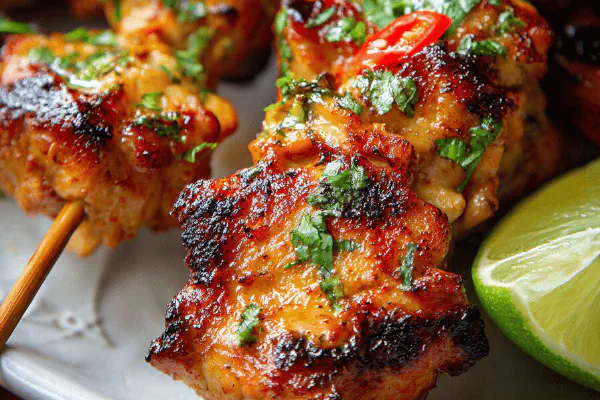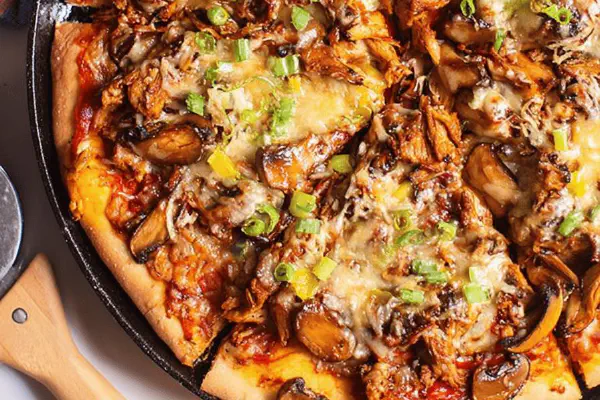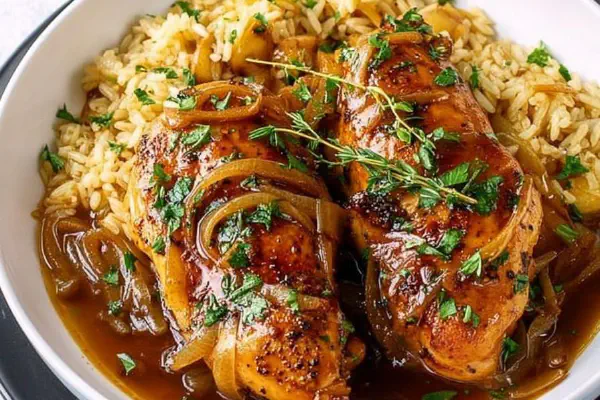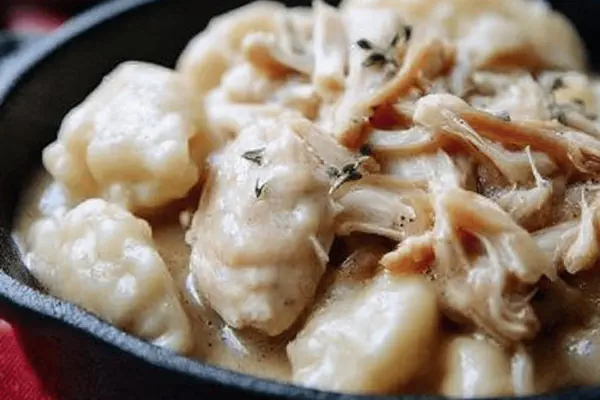Smoky Blackened Chicken

By Emma
Certified Culinary Professional
Ingredients
- 4 boneless skinless chicken breasts
- 3 tablespoons unsalted butter
- 2 tablespoons olive oil
- 1 teaspoon smoked paprika
- 1 teaspoon dried oregano
- 1 teaspoon garlic powder
- 1 teaspoon onion powder
- 3/4 teaspoon salt
- 3/4 teaspoon freshly ground black pepper
- 1/2 teaspoon cayenne pepper
- 1/2 teaspoon dried thyme
About the ingredients
Method
- Preheat oven to 405 degrees F for a bit more punch. Mix all dry spices thoroughly in a small bowl. The blend smells smoky, earthy, with a subtle heat that’s key to blackened flavor.
- Melt butter gently in microwave-safe bowl, about 40 seconds. Watch carefully – you want melted, not browned butter. Butter helps spice stick and browns well in pan.
- Pat chicken dry, then dunk in warm butter. Work quickly so butter doesn’t cool and clump. Coat evenly with seasoning mix, pressing down to embed spices. This crust is everything.
- Heat large skillet (cast iron best, stainless second) over medium-high until just smoking. Add olive oil – shimmering means ready. Slip in chicken carefully. Listen to that crackle – hallmark of good sear.
- Cook chicken 4-6 minutes per side, watch crust develop deep golden to dark brown, almost black spots. Don’t rush flips; crust needs time to form. If crust sticks, it’s not ready to flip.
- Slide skillet into oven (only if ovenproof) or transfer chicken to baking dish. Let finish 16-22 minutes. Test temp with probe – 165 degrees F internal is must. Juices clear, not pink.
- Rest chicken on plate 5 minutes after removal. Juices redistribute. A slice should reveal no raw tissue, with crisp spice crust and tender meat inside.
- Serve straight, or with aioli, hot sauce, or grilled veggies. Leftovers shred nicely in salads or sandwiches.
Cooking tips
Chef's notes
- 💡 Heat cast iron until faint smoke rises. Drop water - it should skitter and vanish fast. No oil til skillet’s screaming but not burnt. Olive oil raises smoke point; butter burns quick alone. Melt butter separately to keep control. Butter soaks spices in, makes crust cling. Watch butter color; tan, not brown. Cool butter down or do layers rather than slop - too much cools chicken, ruins crust.
- 💡 Spice blend needs dry mix, no clumps, or coat uneven. Fresh cracked black pepper sharper punch, pre-ground dulls. Adjust cayenne carefully - too much hides paprika’s smoky notes. Thyme or oregano swap changes aroma dramatically, oregano sharper. Rub mix thick enough to stick but not paste. Pat chicken dry fully before butter dip, watery surface means slipping rub and soggy crust, defeats purpose.
- 💡 Sear time critical - 4-6 mins per side. Don’t flip too soon, crust must form. Tapping crust with spatula tests readiness; if sticking, wait. Crackling sound shifts from furious to even sizzle; that’s cue. Color deepens from golden to dark spots but avoid full black char. If crust too pale, heat too low; too dark, burnt taste creeps. For non-ovenproof pans, prep quick transfer after searing; foil pan or ceramic dish works fine.
- 💡 Oven finishing seals inside cook. Probe thickest part; 165 F guideline but 160 undercooked, 170 dry. Resting on plate crucial. Five minutes min, juices redistribute, crust firms without drying meat interior. Skipping rest means moisture loss, knife test with juice color also indicator. Slice after rest, crust stays crisp, inside tender. Butter layer beneath rub browns differently inside oven, gives complex texture contrasts.
- 💡 Leftovers shred great for sandwiches, salads. If in a pinch, pan sear fully and skip oven but expect uneven cook. Wet chicken, or rushing heat, leads to soggy, raw centers. Dry completely and don’t crowd skillet to keep temperature stable. Don’t over-flip; crust fragile and breaks apart easily. Butter and oil combo critical for smoke point balancing. Also, scale seasoning bulk, store sealed; makes weekday prep quicker and flavor consistent.
Common questions
How do I know when to flip chicken?
Listen for crackle shifts, crust must feel firm, not sticky. If it clings when nudged, wait. Color goes from light brown to dark spots. Flipping too early tears crust, wastes seasoning layer.
Can I use different herbs?
Yes, oregano sharpens brightness more than thyme’s earthy depth. Both good but change aroma and slightly alter sear flavor. Swap based on mood or what’s fresh. Dried always better than fresh here; fresh herbs can burn fast and disrupt crust texture.
Why does crust fall off sometimes?
Mostly moisture on chicken or butter temperature off. Butter cold clumps spices or drains off. Water on chicken stops rub from sticking. Dry meat well, melt butter gently, press rub evenly. Don’t poke crust while cooking; breaks it apart.
Best way to store leftovers?
Cool thoroughly before fridge; wrap tight to stop drying. Use airtight containers or foil packs. Reheat in skillet for crust return or oven on low to avoid rubberiness. Shred for salads, sandwiches; avoid microwave reheats often, crust softens fast.



